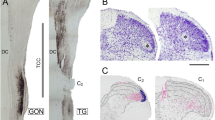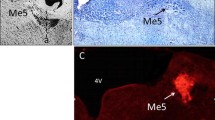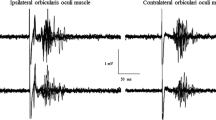Abstract
Neuronal activities of the somatosensory (Sm1) vibrissa cortex were explored bilaterally under moderate gaseous anaesthesia in rats with a chronic constriction injury (CCI) of an infraorbital nerve (IoN). The CCI-IoN rats exhibited abnormal pain-related reactions to mechanical stimuli directed to the territory of the injured nerve, just prior to the recording session. The responsiveness, laminar localisation, and somatotopic organisation of 388 neurones were recorded in the pad vibrissa cortex contralateral (Cc, n=249) and ipsilateral (Ci, n=139) to the injured nerve, analysed, and compared with 223 neurones recorded in a parallel study of the Sm1 cortex in normal rats (Cn). The mean background activity of all the recorded neurones was relatively low, whether they were located in the Cn, Cc or Ci. The responsive neurones occurred in similar proportions in the Cc and Ci (∼55%) and significantly more frequently than in the Cn (35%). They consisted mainly of vibrissa neurones (100% in Cn, 85% in Cc, and 93% in Ci). The ratio [vibrissa neurones/(vibrissa+unresponsive) neurones] was enhanced in all the cortical layers of the Cc and Ci, except in the Cc layer IV. The receptive field (RF) size of the vibrissa neurones also differed greatly. It was limited to one vibrissa for 88% of the Cn neurones, but expanded to two or more vibrissae for 72% of the Cc and 52% of the Ci neurones. These multivibrissa units, mostly located in layers V and VIa for the few Cn neurones, were scattered in the different layers in CCI-IoN rats, with the largest RFs occurring in the deepest layers. In parallel, the cortical somatotopy of the vibrissae, roughly comparable with that initially described in pioneer studies of normal rats, was dramatically disturbed not only in the Cc, but also in the Ci of CCI-IoN rats. Contrasting with the results previously obtained in the ventro-postero-median thalamic nucleus of CCI-IoN rats, no neurones were driven by pinches or pinpricks applied to the cutaneous part of the vibrissa pad. It is questioned whether the disorganisation within the cortical map of the whisker pad, and the expanded RFs of vibrissa neurones could account for the abnormal pain-related reactions elicited from the massively deafferented trigeminal area.
Similar content being viewed by others
Author information
Authors and Affiliations
Additional information
Received: 21 September 1998 / Accepted: 19 January 1999
Rights and permissions
About this article
Cite this article
Benoist, JM., Gautron, M. & Guilbaud, G. Experimental model of trigeminal pain in the rat by constriction of one infraorbital nerve: changes in neuronal activities in the somatosensory cortices corresponding to the infraorbital nerve. Exp Brain Res 126, 383–398 (1999). https://doi.org/10.1007/s002210050745
Issue Date:
DOI: https://doi.org/10.1007/s002210050745




